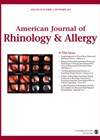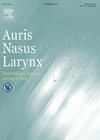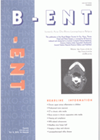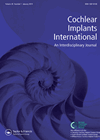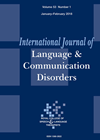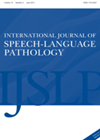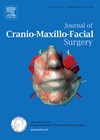
Journal Reviews archive for January 2020
Sinus implants to treat recalcitrant polyps
It is well established that the burden of chronic rhinosinusitis on healthcare costs and patients’ quality of life is high, and that current mainstream treatment options of oral or topical steroids are not without problems. This paper compares two RCTSs...
SNOT-25 to assess CRS - a new tool
The SNOT-22 is a well-established validated instrument, designed to evaluate the rhinosinusitis-specific health status and health-related QOL, however makes only one broad reference to productivity. The objective of this paper is to evaluate a modified SNOT-25 created to better assess...
Stapedotomy in osteogenesis imperfecta
Osteogenesis imperfecta (OI) is a rare connective tissue disease caused by a defect in collagen structure. Hearing loss is a characteristic feature of OI. It typically presents with conductive hearing loss initially, followed by a superimposed sensorineural component later in...
Acute ENT activity in a teaching hospital
This Belgian prospective audit attempted to provide justification for the provision of a 24-hour emergency service at a large 1038-bed teaching hospital (with 31 ENT consultants). The authors looked at a one-month period during which 190 patients were admitted. They...
ENT surgical training in Belgium
The authors aimed to identify strength and gaps in ENT training in Belgium through a national survey amongst ENT Belgian trainees. They attempted to contact 94 trainees, with a response rate of 59.5%. Of the respondents, 35.7% rated their level...
Double layer graft in endoscopic tympanoplasty
This Turkish retrospective study looked at the success rates following endoscopic tympanoplasty using the double layer graft technique. This involves using a tragal cartilage and perichondrium composite graft and a separate perichondrial graft for closure of the perforation. The crescent...
X-ray vs. intraoperative testing for determining cochlear implant placement
Most cochlear implant centres confirm electrode position after surgery using X-rays to ensure optimal electrode placement. As well as transorbital view X-rays, this team check placement using impedance measures and neural response telemetry (NRT) performed intraoperatively. The former indicates whether...
Humour to improve clinician - patient interactions
This study examined the role of humour employed by the speech language graduate student during their one-on-one therapy sessions with people with aphasia (PWA). The students used humour to soften the errors made by the clients; to equalise interactional power;...
Genetic testing in congenital hearing loss
Advances in genetic testing over the last decade have reduced the cost and time such testing required and increased understanding of the genes involved in conditions like congenital hearing loss. This study from Atlanta looks at genetic testing from a...
Tell me like it is: advice for relatives of people with aphasia
More than a quarter of people who have a stroke present with aphasia immediately post-stroke (approx. 30%) and of these, around 60% experience chronic communication difficulties. Provision of information is seen as one of the top 10 best practice recommendations...
Do you really like me? Is it, Is it therapy?
Therapeutic alliance describes what happens in the interactions and relationships between the client and the therapist. There is evidence from mental health literature that a therapeutic alliance can have a significant impact on outcomes. A negative alliance can lead to...
Risks of tracheostomy in head and neck cancer
Tracheostomy is associated with several complications, with rates quoted as high as 8-45%, including: bleeding; displacement; obstruction; surgical emphysema; pneumothorax; fistulae and failure to decannulate. There are now many studies that confirm the increased length of stay and complications of...

